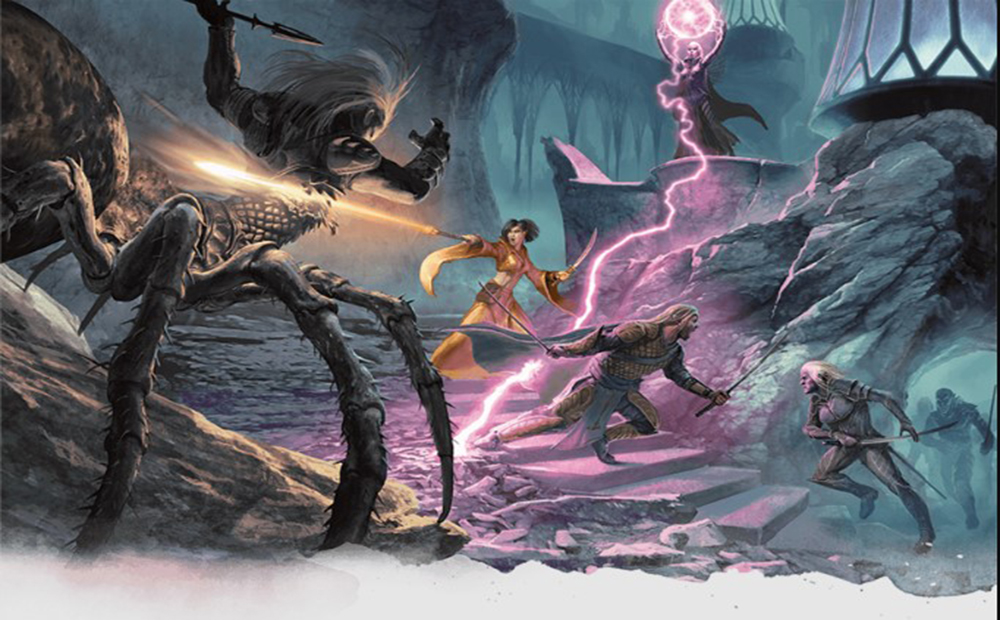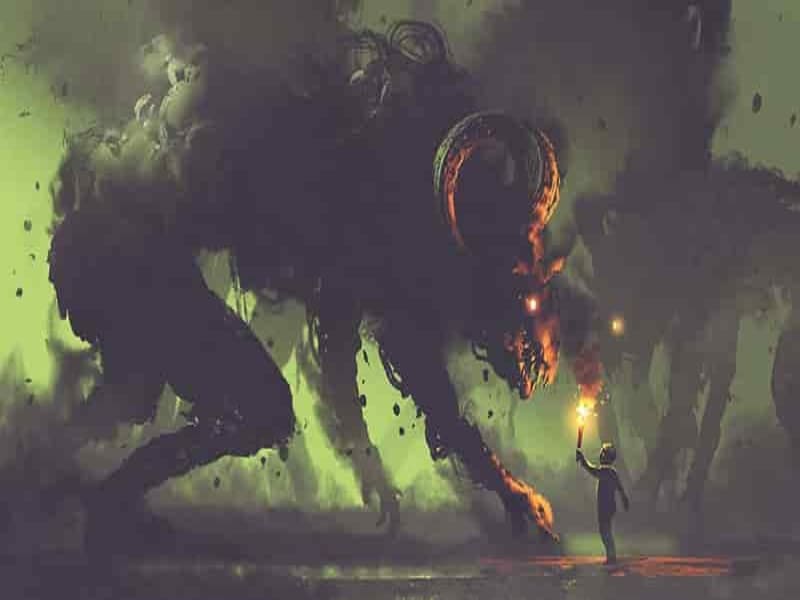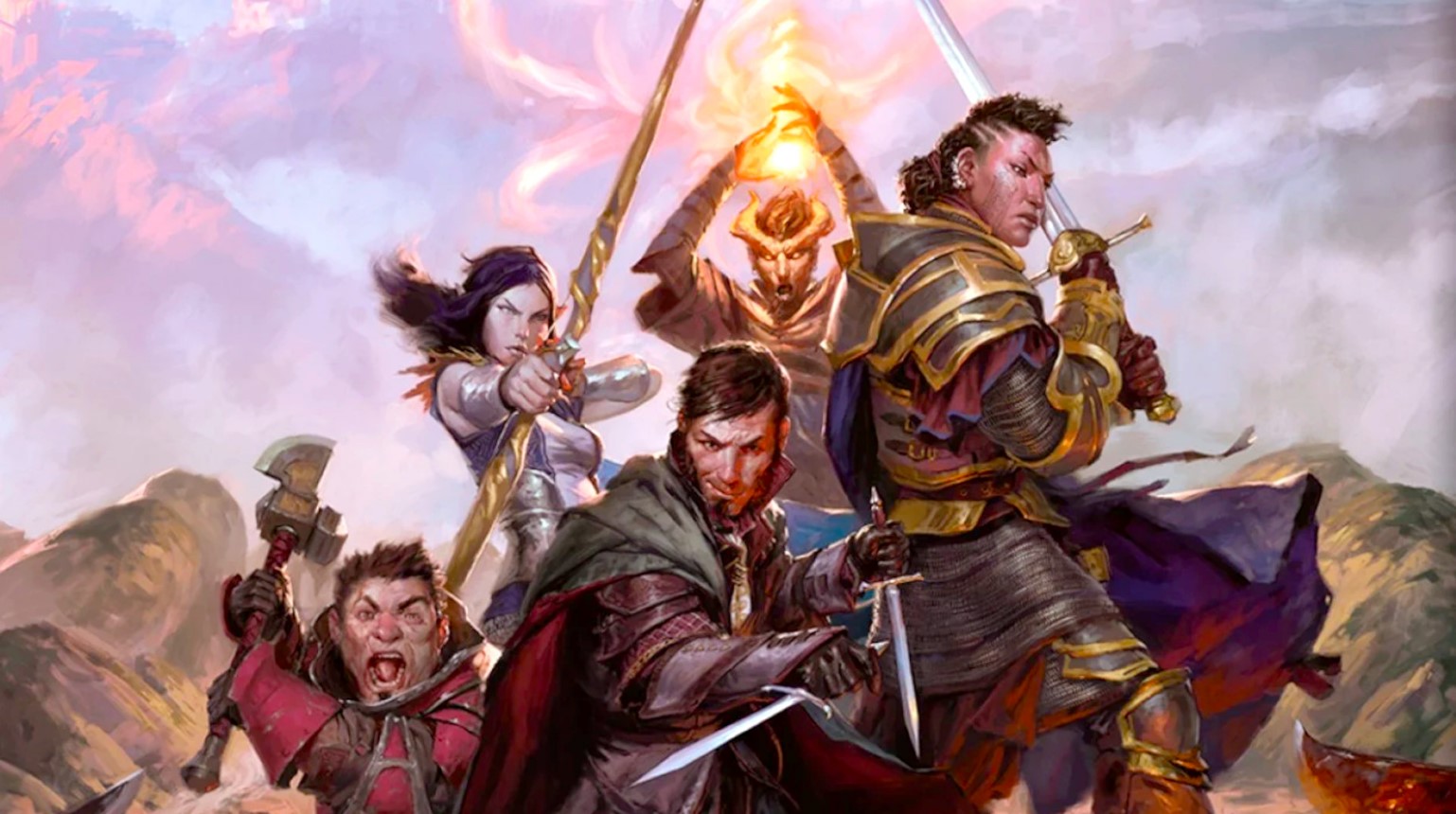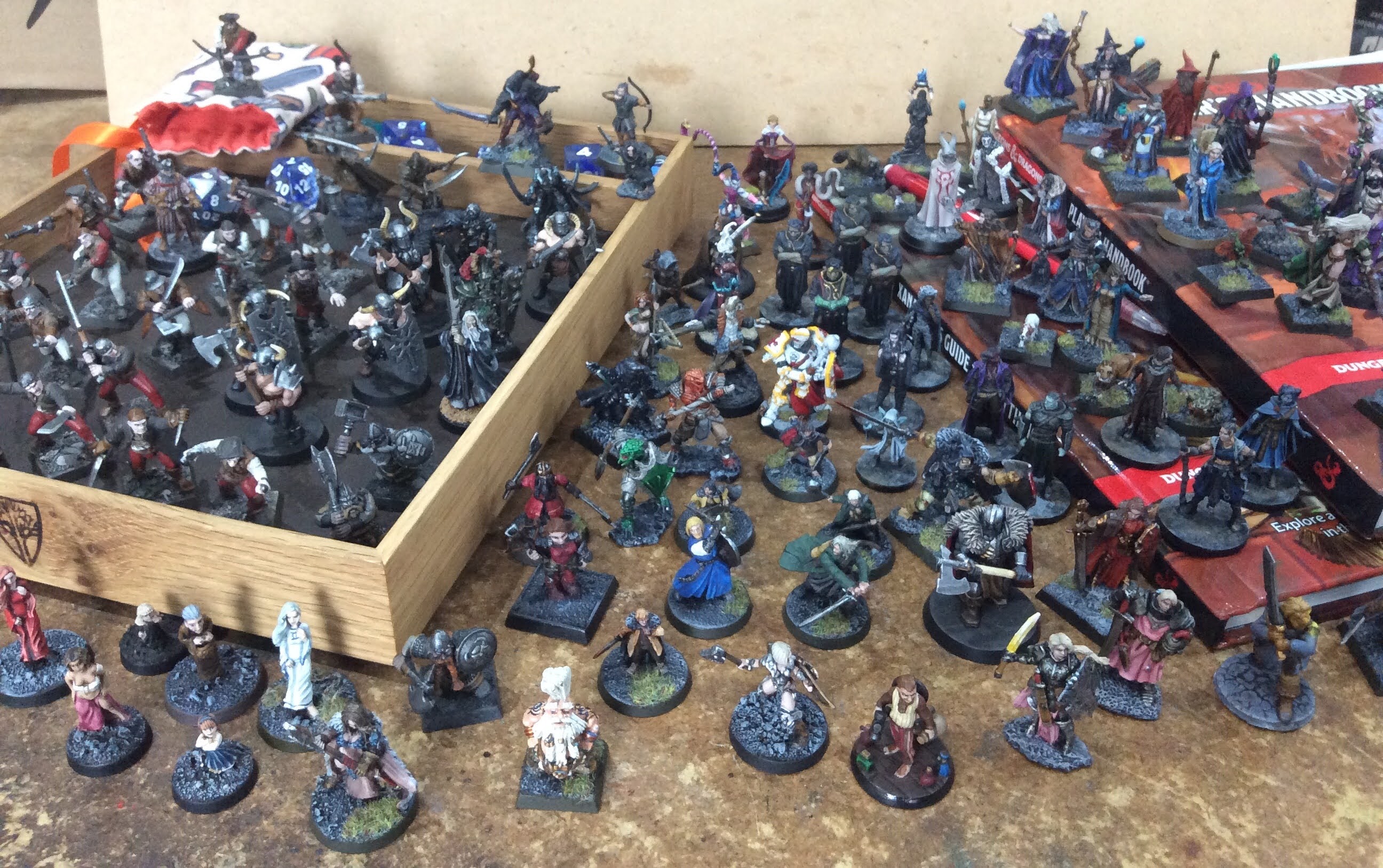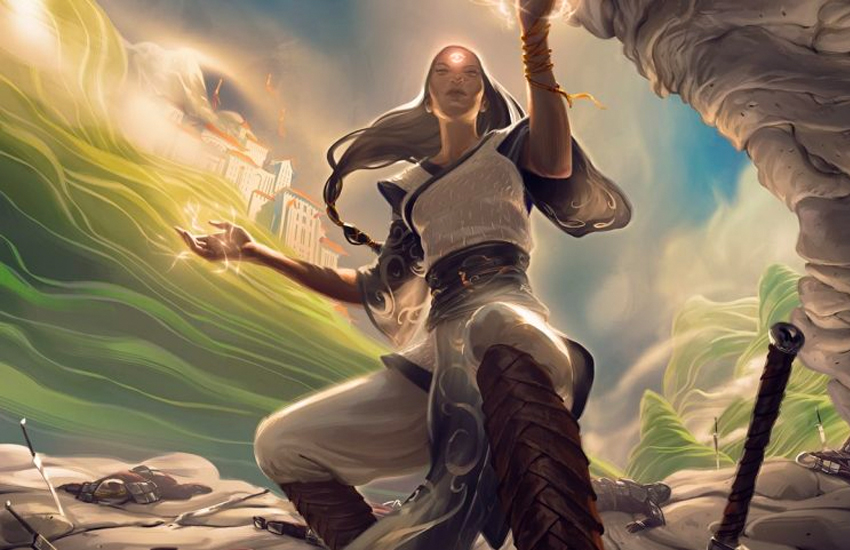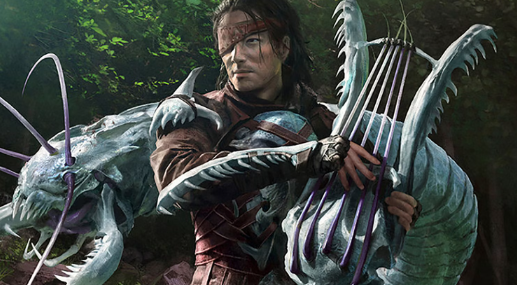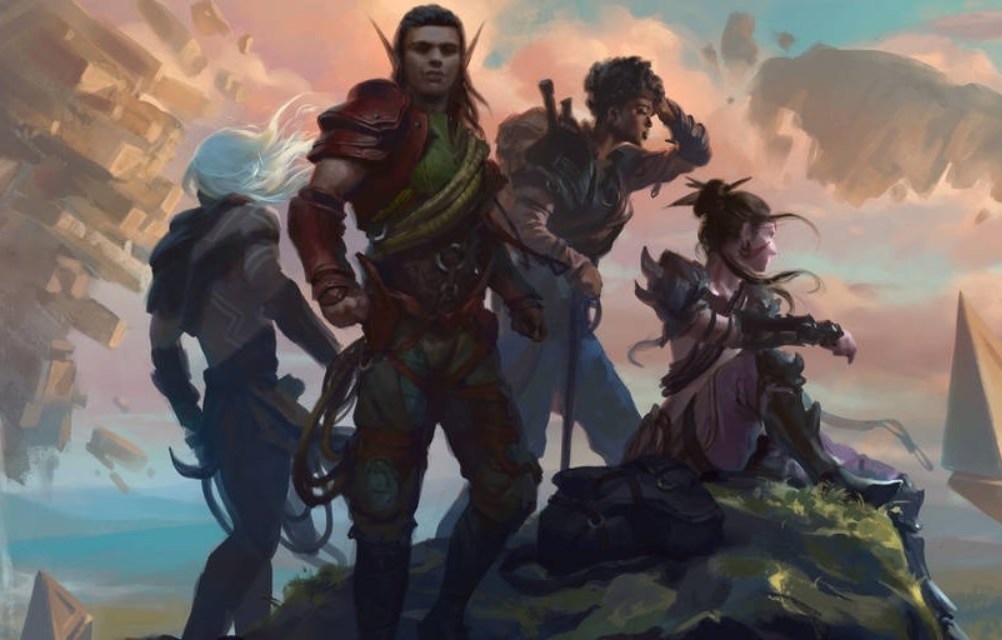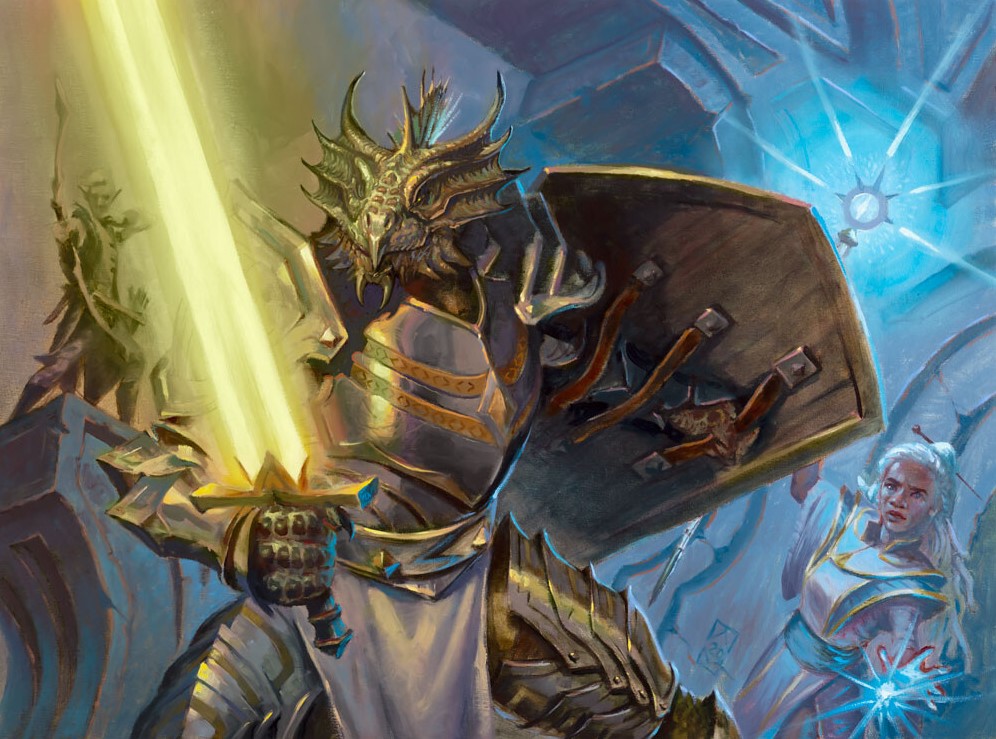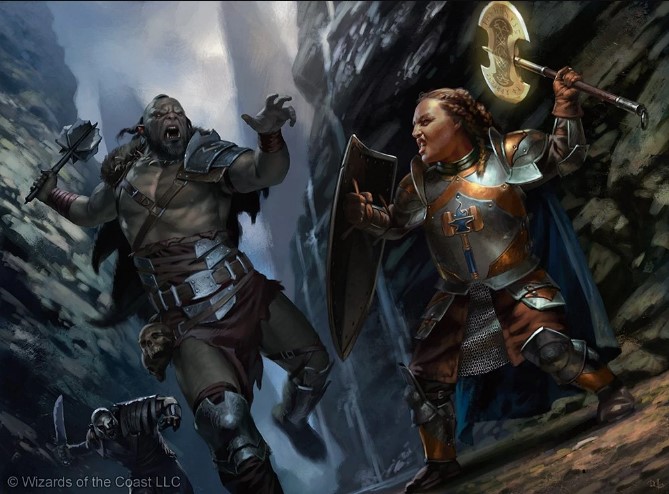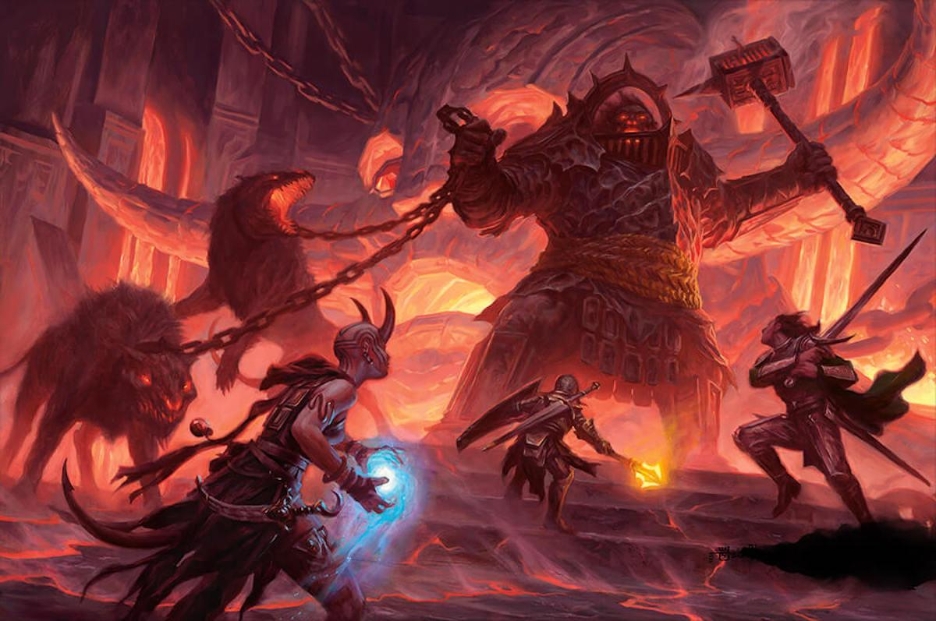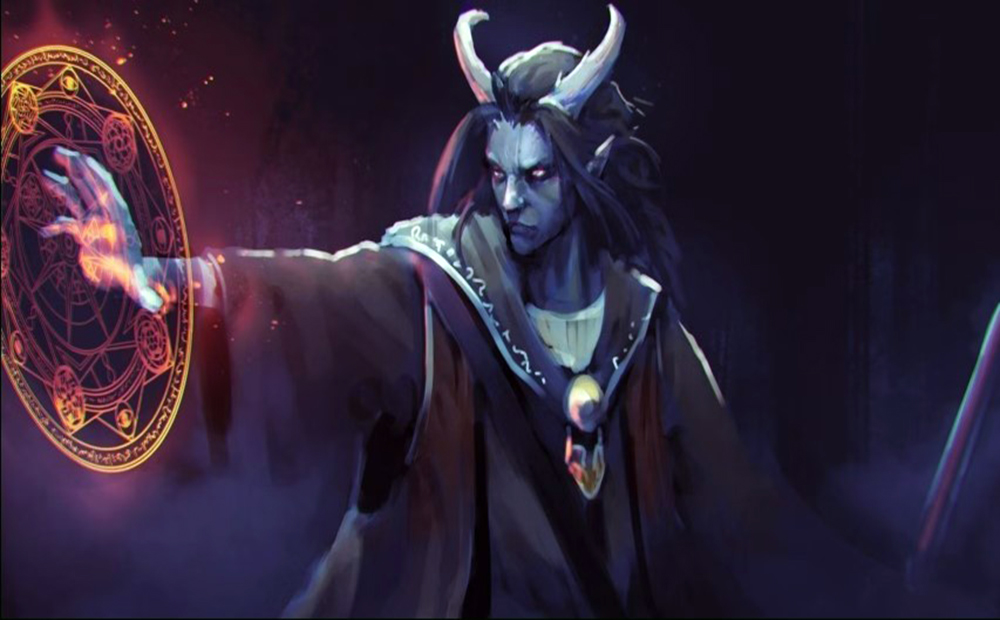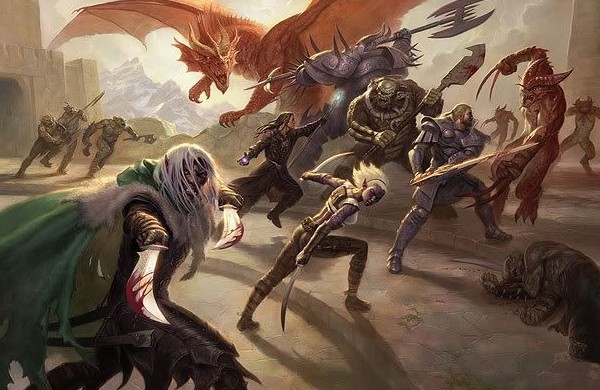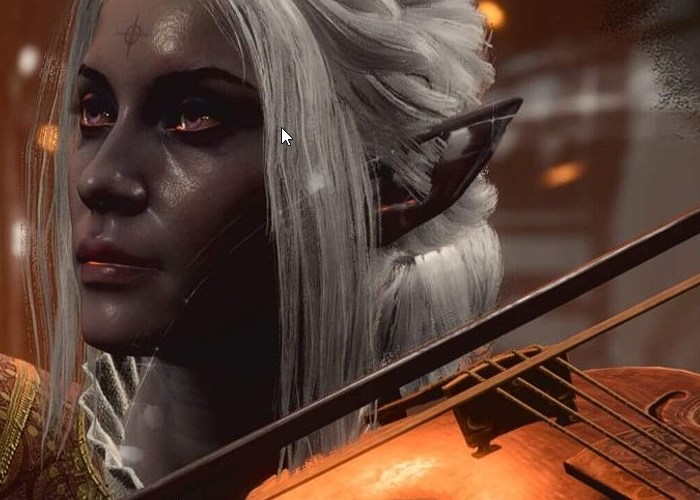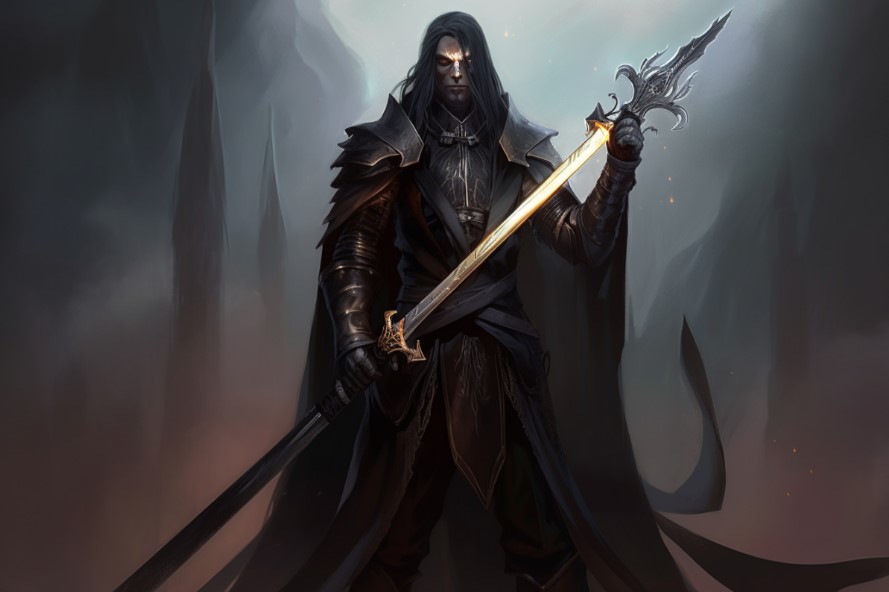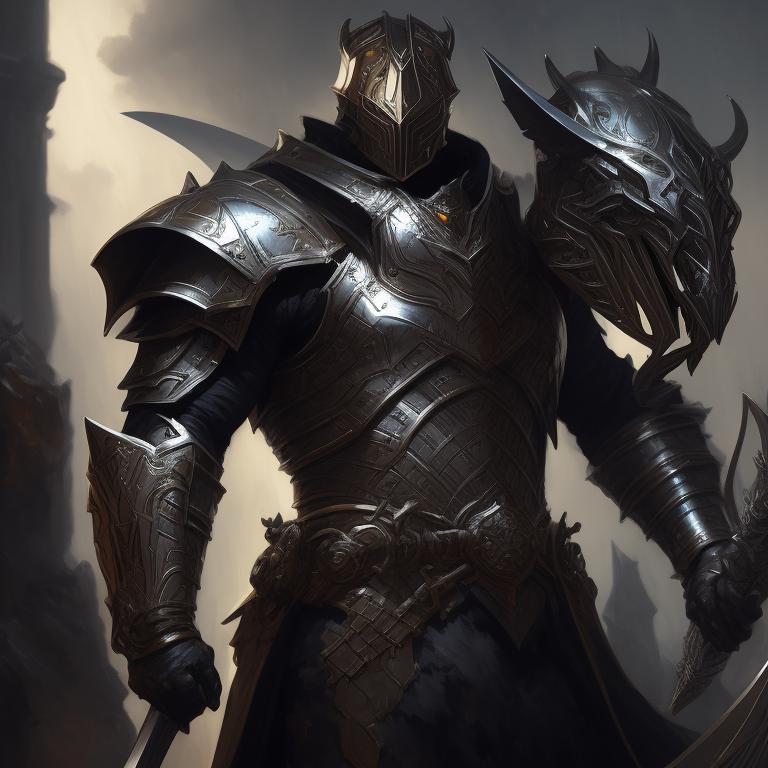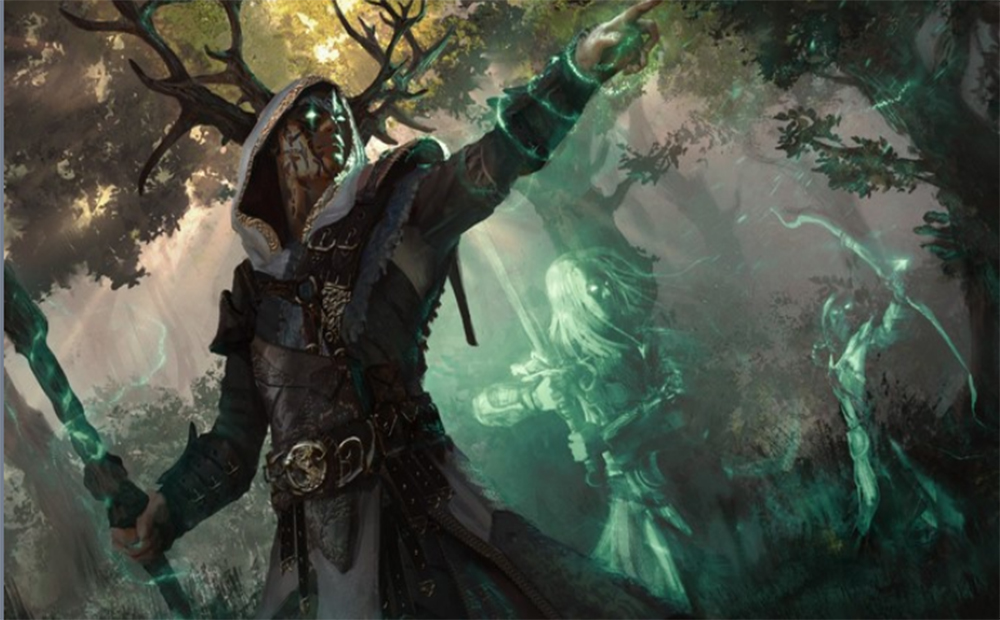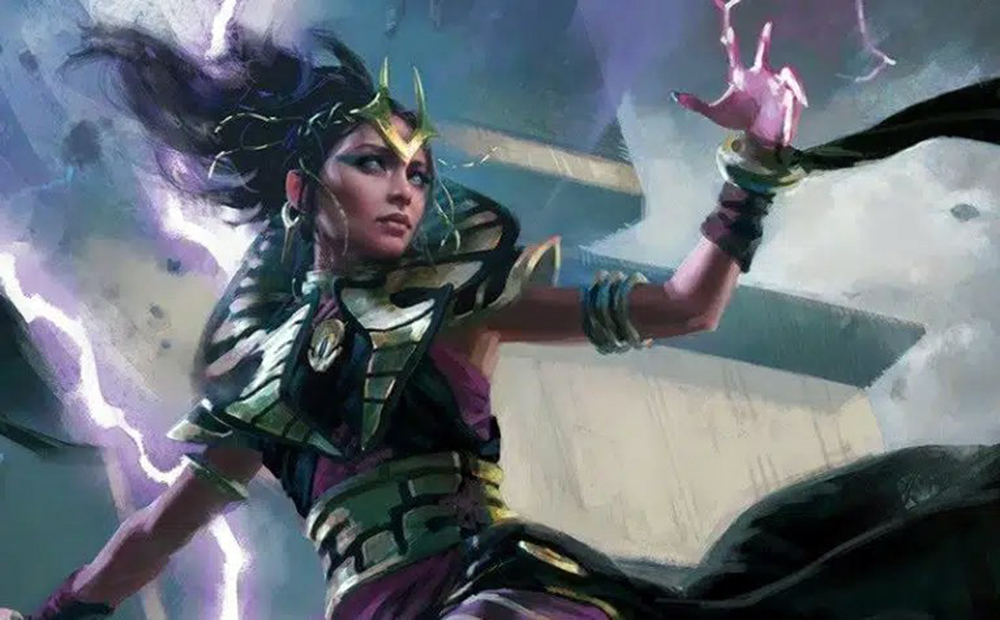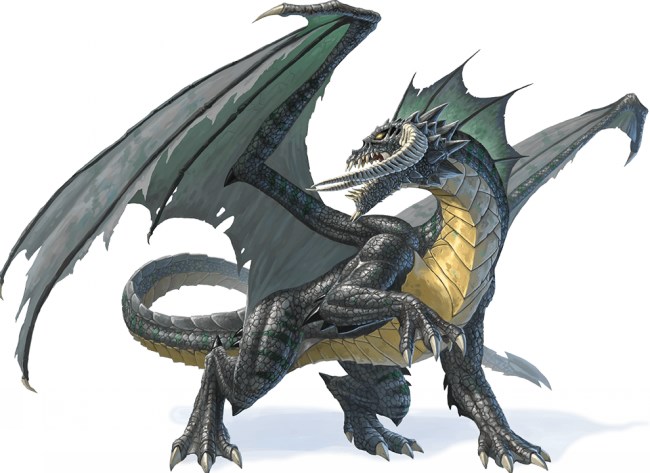
Your journey awaits! You’ve done it–you have a group of friends interested and able to play a D&D game with you. They’ve made their characters, committed to a time, and brushed up on the rules. Now all that is needed is your campaign, but what does that entail?
Some campaigns are better than others. Some develop storytelling and character growth, others build a detailed world and make the campaign feel alive. Stories can range from fantasy romps to gritty realism to sci-fi to historical accuracy. They can lead you to victory over the evils of the world or tempt you to embrace the dark side, or maybe even strike out somewhere in between. What type of campaign will you create?
Here are my top fifteen DM tips and tricks to improve your campaign, giving you the tools to lead your party on an epic adventure they’ll never forget.
15. Talk to Your Players Before Using Resource Management
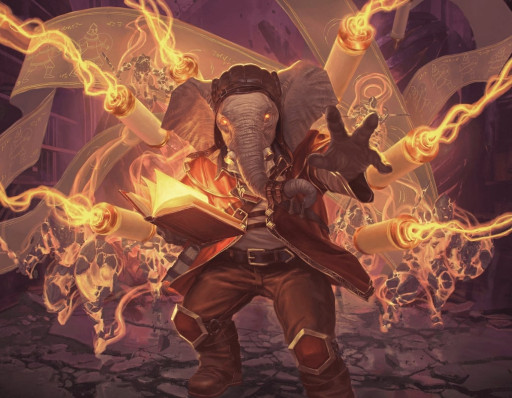
Wizards of the Coast: Quintorius, Loremaster by Lie Setiawan
Resource management can be an incredibly challenging and fun mechanic to implement in your campaign. This refers to the monitoring of resources, like ammunition, food, spell components, and tools, as your adventure continues. But not all players are interested in keeping tabs on their resources. If you want to use resource management rules in your campaign, talk to your players beforehand.
Resource management can make your game more realistic, requiring your players to pay attention to the little details. But not all players want this level of detail, instead opting for a more relaxed game. Some are disappointed or upset by the inclusion of resource management in their campaigns, especially if they were not aware of the rules beforehand. To ensure that everyone is on the same page and enjoys their game, always check with your players before implementing new rules.
If your players do want to play with resource management, great news! There are a variety of ways to add them to your game, even in more relaxed games. Most DMs handwave their resource management rules, only requiring detailed management of large resources and spell lists, like a 300 gp diamond spell component. But keeping track of smaller things, like arrows or rations, can transform your game into a challenging survival story and make your victories feel more realistic and hard-earned. Encourage your players to give it a try, but don’t force it if they aren’t interested in that type of campaign.
Resource management requires you to be more deliberate with your resources. It forces you to look at the road ahead, planning out not only where you want to go but also what you want to do/who you can afford to encounter. This style of play is not for everyone, but with the right group, it can be a great deal of fun. The key component (pun intended) is to keep communication open between everyone at the table.
14. Campaign Books
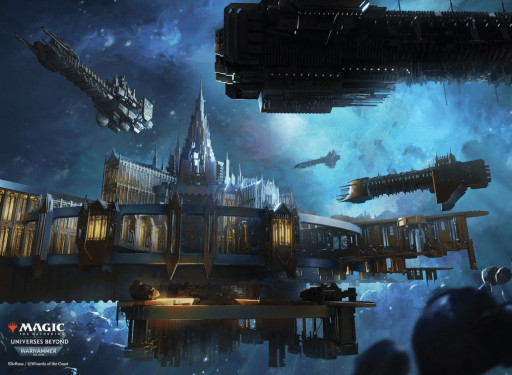
Wizards of the Coast: Tranquil Cove by Eliz Roxs
While homebrew campaigns are incredibly fun and provide an avenue for you to write your own story, they also take a lot of work to build and maintain. You’re in charge of the story, sure, but that means you need to build the universe from the ground up. You plan all the plot points, encounters, locations, and NPCs. If that sounds a bit overwhelming or you just want to take a break from writing, prewritten campaign books could be the solution for you!
Campaign books provide worlds and stories written by professional storytellers and tabletop roleplaying creators. They’ve already written out the major beats of the story, encounters, maps, and everything else you need to know. These are fun and approachable ways to start a campaign, even if you are new to the game or just want to relax. Campaign books may also teach you some new things about running a campaign or give you ideas for your next original story.
Campaign books are normally organized by sections, subdivided so you can find information easily. These categories may include locations, plot points, or new characters. Each storyteller is different, so it is important to read through the book before you get started. Also check in with your players and ask if the campaign book you’ve chosen is one they want to play. Some books even have a one-shot to give you and your players a flavor for the game before jumping into a full campaign.
Campaign books allow old and new DMs alike to share their stories with the rest of the world and worlds beyond. Just like how homebrew games are written by you, campaign books are also written by DMs who want to lead a fun campaign. Each has a different flavor and style, but that can make the game even more fun! Some books are even divided into multiple one-shots, allowing you to explore the world in bite-sized pieces.
13. Puzzles Don’t Need to Be Complex
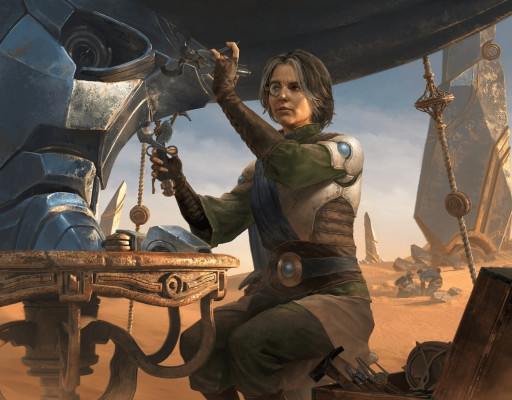
Wizards of the Coast: Tocasia, Dig Site Mentor by Lie Setiawan
You’ve planned an elaborate dungeon, full of twists, traps, and plenty of monsters. Before your players reach the final boss, they must solve one last puzzle. But how do you plan a puzzle for a tabletop roleplaying game? Don’t overthink it–puzzles don’t need to be as complex as you may think.
Puzzles are a staple of D&D games, providing challenges to your party and their players alike. One of my most memorable puzzle experiences consisted of a fairly simple solution: match up torches with the inscription written below the sconce. But due to a few poor investigation rolls, it took my party much longer than we would’ve liked to reach the solution. While the puzzle itself was fairly simple, the translation to D&D made it much more challenging. It was a very fun puzzle, but even a simple solution was tough to solve.
Puzzles challenge your players to find new solutions to the problems they face. These can range from matching colored tiles to stopping water from filling up the chamber. Puzzles are designed to challenge your players, to make them think outside the box, but they don’t need to be needlessly difficult for the sake of a challenge. Regardless of the puzzle, it should encourage your players to work together and think creatively.
Creative puzzles can be both fun and engaging. They give your players opportunities to think creatively within an enclosed space, solving a problem and moving forward in the story. Puzzles can also push your players to use their strengths, both in and out of game. Try to line up the themes of your campaign and the strengths of your players with the challenges you set before them.
12. Decide the Type of World for Your Campaign
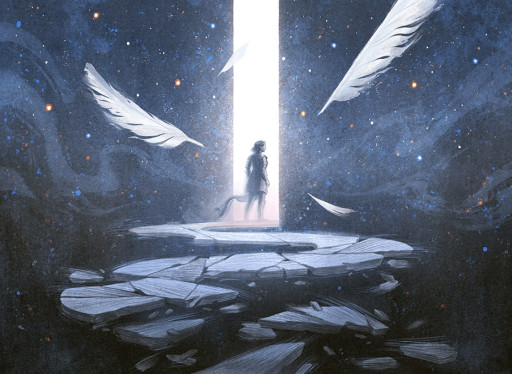
Wizards of the Coast: Moment of Truth by Rovina Cai
Campaigns tell epic stories of daring adventures and brave heroes. But each story sets its foundation in its world, building off of the core elements of the universe. Whether you are in medieval times, deep space, or the streets of your home town, the world you establish will allow both you and your players to engage more deeply with your story.
Does your world have magic or is it grounded in a more realistic setting? Are you limited to a small island or do you have an entire continent to explore? Do you want a straightforward hero’s journey or will your players get to wander in an open world? Each of these questions help to establish the type of world for your campaign, giving you tools to work with as your story continues.
Once you have a story prompt, share it with your players. When all lights read green, then it is time to start building your world. Similar to campaign books, there are plenty of premade worlds for D&D games, allowing you to build your own story within their systems. But you may want to design your own world, granting you access to homebrew quirks and abilities no other games have. While not necessary, maps can help you and your players visualize the world you’re playing in. Mix and match to find the perfect balance for your game.
Apart from your story and your players, the world is one of the most important aspects to your game. The world you play in sets the tone for the rest of your game. You could be in a war-torn kingdom, a chaotic fey forest, a spaceship hurtling through the galaxies, or something else entirely. Find what you enjoy playing and don’t be afraid to try something new!
11. Consider Your Pantheon

Wizards of the Coast: Heliod, the Warped Eclipse (Variant) by Jason A. Engle
D&D worlds are full of extraplanar and divine powers. Several classes, like the cleric, paladin, and warlock, gain abilities directly from these sources. Pantheons are the backdrops of these worlds, providing a collection of powerful and influential beings into your story. Consider the themes and prevalence of the deities and patrons that walk amidst your campaign to give your world more depth and magic.
Pantheons are the rosters of deities that exist in your world. Pantheons may be large or small, full of deities of a single theme or covering all domains. They may be quite active in the lives of mortals or may hide away in secluded planes, waiting for their champion to emerge. From a storytelling perspective, they can influence your characters and give them something to fight for.
Apart from their obvious connection to more divinely inspired classes, beings found in your pantheons can affect more than just your characters’ backstories. Consider how they influence the world around them–are they well-known or fairly recluse? Do they control domains within the world, like guiding souls to the afterlife or bringing about new life and seasons? What themes do they oversee and how will that affect your story?
Pantheons are free storytelling tropes. They can be included in just about every story, even ones where they are seemingly absent, like in societies who have rejected the gods. After you decide how common your pantheons are, start to ask questions about why they came to be that way. What events in your world’s history shaped the pantheon? This will help you build a more robust world and story for your campaign.
10. Encounter and Travel Tables

Wizards of the Coast: Take Flight by Joshua Cairos
Your party is traveling from point A to point B. It will take them a while, so you don’t want to just brush over the journey. But what is there to do other than plod along? Encounter and travel tables provide a variety of ideas for day-to-day encounters and happenstance.
Travel can be so much more fun than simply moving from point A to point B! Tables provide you with premade scenarios to add to your players’ adventure. The encounters aren’t too long, either–usually, they consist of small things the party can find on their journeys, like a roaming monster, suspicious tracks, or a caravan of NPCs. These encounters can grow into something larger or simply provide flavor to your campaign.
Encounter and travel tables are usually organized with categories pertaining to a roll of the dice–six categories for a d6 roll, eight for a d8, etc. You can choose the one you like best or roll a dice to choose one at random. These tables can be customized by location or theme, like forest or planar tables. Each can be used to make your game more interesting and fun.
DMing is supposed to be fun, allowing you time to spend with friends and tell an epic story. But some parts of D&D can be more monotonous, seeming like a chore rather than a fun game. Encounter and travel tables take out some of this monotony, allowing you to get back to the fun of your story.
9. Have a Well-Established World and Map
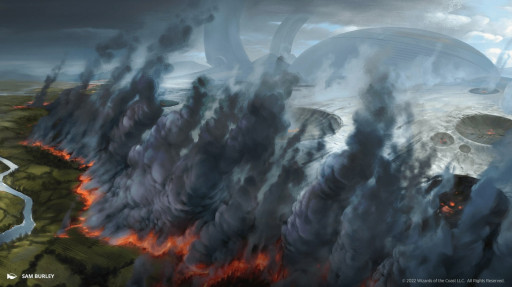
Wizards of the Coast: Evolving Wilds by Sam Burley
Now that you’ve decided what type of story you want to tell, you’ll need to solidify the world surrounding it. It can be a daunting task to set up your world, but it can also be one of the most fun parts of planning your campaign! Building your world gives you a canvas upon which to paint your story, enriching it with fictional locations and landscapes.
Your world is literally the stage upon which your campaign is set. The more detailed your world, the more detailed your story can be. Create a world upon which your story can thrive–establish it and fill it with just enough details to tell your story. Anything beyond that, just have fun with it!
I am both a visual learner and an artist, so I enjoy drawing maps for my world. But there are plenty of options for computer-generated maps and virtual tabletops. Some people even throw dice onto a large sheet of paper and use the numbers rolled to determine terrain and manmade structures. Find the method which fits best for you to make your world come alive.
Building a well-established world not only helps you, the DM, as you prepare your story, but it also helps your players to visualize the landscape they find themselves in. The more effort (notice: effort, not detail) you include in your world, the more engaged your players will become. By setting up a fun world with new things to explore, you give your players permission to dive deep into their own stories.
8. Plan a Twist

Wizards of the Coast: Vanish into Eternity by Magali Villeneuve
Not all literary twists are cliche. While twist villains have become an overused trope in modern media, twists in general can provide more depth and intrigue to a story. When used carefully and respectfully, it can take your adventure to the next level. Keep your players guessing, yet also reward their keen eyes and sharp wit.
Plot twists refer to something in your story that the readers/players did not expect. Twists can certainly be written quite poorly, practically spoiling the narrative, but they can also be some of the best literary moments in history. To plant a good twist, take a look at classic mysteries. These stories hint at the outcome early on without spoiling the surprise and make the impact meaningful to the overall narrative.
Writing a plot twist is easier said than done. The best plot twists leave clues behind for astute observers to pick up on, but they don’t make these clues too obvious. The clues are subtle, hiding in plain sight. The twist itself is also relevant to the plot itself, providing a meaningful shift in the story without rewriting or canceling everything that has already happened.
Plot twists can be super fun to both write and experience. They make you and your players feel like professional investigators, noticing every little detail to solve the mystery. Even if you have trouble writing or solving a plot twist, good twists ultimately make the story more fun to play. They keep your players on their toes and reward sharp thinkers.
7. Your Story Doesn’t Need to Be Complex

Wizards of the Coast: Fallaji Archaeologist by Caroline Gariba
As a DM, you want to make your story the best it can be! If you’re writing a homebrew world, you may be tempted to add a ton of content to your campaign, making your story increasingly complex. While it is very fun to keep adding more to your campaign, simple stories can be even more effective in drawing your players in, giving them a fun adventure without causing you too much stress.
The more content you add to your story, the more you risk complicating what is important and confusing your players. But simplifying your story doesn’t mean making it boring! Even simple stories can be incredibly powerful, allowing your players to go on an adventure and have an emotional connection with your world.
Some of the best literary works follow a fairly simple structure. The classic hero’s journey, for example, is a format that can fit well into a D&D campaign. Send your party off on an adventure into the unknown and have them return to defeat the big bad at the end. Even though this story isn’t complex, there is plenty of room to add your own customizations and transform it into a story that is purely your own.
When a story becomes too complex for the readers/players to understand, it makes the whole experience less fun. They may or may not be willing or able to follow along. But simple stories allow them to engage with the narrative every step of the way. You can create incredible stories, even if they are simple. The most important part is making sure everyone has fun.
6. Plan Your Big Bad
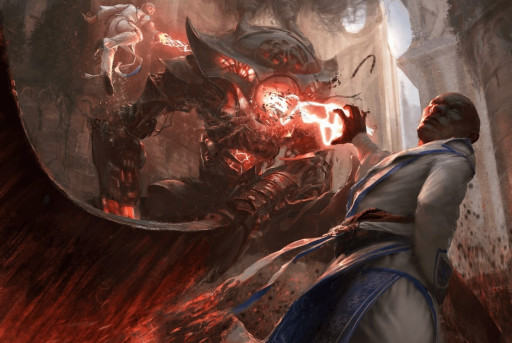
Wizards of the Coast: Obliterating Bolt by Campbell White
A hero is only as good as their villain. Villains are the catalysts for heroes to become heroic, to stand up and save the world. Such an important character deserves some pomp and circumstance. Planning ahead and subtly hinting at your big bad will make them a menacing monster, even if they haven’t yet appeared…
The main villain can set the tone for your adventure. When your party goes head-to-head with a powerful villain, they’ll have to become more powerful themselves to emerge victorious. Planning ahead will allow you to make your villain more influential later on. If you hint at your villain early on in the campaign, it will give your party something to build off of when they finally confront the villain themselves.
I like to tie my villain into the lore of the world. Were they a powerful ruler or evil sorcerer who warped the land into darkness? Do they rule with an iron fist, causing villagers and average citizens to cower in fear? This gives your party a solid foe to fight and an end goal. It also gives you, the DM, more time to build up your villain and make them a truly intimidating adversary.
It can be easy to push off developing your villain until their encounter with the party. But if you gradually hint at them as you go, your players will be thinking about them throughout the story. As your party continues their adventure, you could add tricks and traps the villain left behind to slow the party down. This will set up your villain as not only a powerful, but a smart opponent, and will result in a satisfying victory for your party.
5. Organize Your Notes

Wizards of the Coast: Pull from Tomorrow by Sara Winters
As the DM, you have a lot on your plate! You have to plan and run an entire campaign, keeping track of not only the plot but also locations, NPCs, monster/villain encounters, and the general mechanics of the game. To run your game, you’ll need to keep your notes and resources organized. This will help you to find what you need when you need it, keeping the game flowing smoothly.
Organization, however minimal, will help you immensely as you play your campaign. Organize your notes in the way that works best for you. Whether you like having detailed notes or a simple overview of the session, organization will keep you on track and ready for whatever your players throw at you.
Organization looks different for everyone. You could have a full outline of detailed dialogue, bullet points, or even just a few notes about the next session or the story as a whole. You could organize your notes by session, location, characters, or themes. Since nothing goes completely according to plan, you may even want to talk to one of your players and ask if they could take notes on each session. However you want to arrange them, note taking and organization will let you find whatever you need easily and quickly.
Organization helps to remind you, the DM, on what comes next in your story. You may want a ton of detailed notes or just a general idea, but writing things down will prevent you from forgetting important details. In game, this will help you to exist in the moment and not worry about details you may have forgotten.
4. Three Layers of Explanation Rule
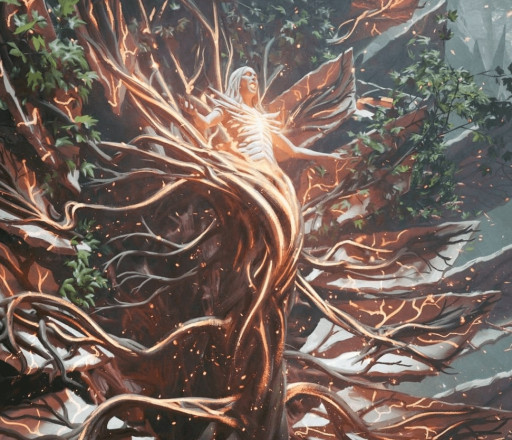
Wizards of the Coast: Wrenn and Realmbreaker by Cristi Balanescu
Do you ever feel like you are spending too much time fleshing out your world? Do you prepare an extensive amount of detail about a single location, plot point, or historical fact, yet it never comes to light? Instead, do you feel like your players only notice and poke around with details you didn’t give a second thought? The ‘three layers of explanation’ rule will help you to create a well-established world easily and come up with answers to your players’ questions.
The ‘three layers of explanation’ rule helps you to build a detailed world without over preparing. Usually, players (or readers of any story) only need to go about three questions deep into a detail for it to feel realistic, for it to feel satisfying. If you can answer at least three questions about a certain detail or plot point, that will give you enough information to make it feel realistic.
For example, say you want to explain why there is a moat full of piranhas surrounding the king’s castle. Maybe there are bandits who tend to raid the castle, and they can’t swim. Why can’t the bandits swim? They’re all earth genasi who sink as soon as they hit water. Why are all the bandits earth genasi? They are an exclusive guild who only allow earth genasi to enter the guild, and they want to form their own kingdom to take over the king’s castle. With those three questions, a seemingly random detail becomes a fleshed-out part of your world; you could even create side quests to explore these questions further!
Three is a magic number! Three layers of explanation gives your players enough detail to make your world feel well thought out, yet it also prevents you from spending too much time and energy on one small detail. It also opens up more questions that you or your party can explore further within your campaign, perhaps leading to side-quests or a significant plot point within the story.
3. Have a Beginning, Middle, and End

Wizards of the Coast: Visions of Phyrexia by Dominik Mayer
It’s fun to come up with a new story or campaign idea! With a new idea, the world is at your fingertips. It can be tempting to just take the idea and run with it, but it is important to start thinking ahead for where the story will end up. While you don’t need to have everything thought out, giving your story a basic structure can help direct your story and lead to a satisfying conclusion.
Strong narratives, especially those that are story-based, have a beginning, middle, and end. This gives the story a structure for the audience to follow. In a campaign setting, it helps prevent the story from trailing off, giving your players an end goal to chase after. When your players have a goal to pursue, they will stay engaged with the story until they reach that conclusion.
This basic structure of beginning, middle, and end is a simple way to keep your story grounded. You could divide your campaign into a three act structure, focusing on different themes that are all building to an end goal. You could have your players travel to three different locations/kingdoms/continents, growing in power and skill along the way. You could follow other storytelling structures, like the hero’s journey or the Fichtean curve. However you want to write it, having a structure will help keep your story on track.
Wrapping up a story can be one of the most difficult parts of the writing process. It requires bringing all the loose threads together. A storytelling structure, especially one that outlines the beginning, middle, and end of your story, will give you the tools to keep your story on track. It will ultimately make it easier for both you and your players to follow the story and bring it to a fun and satisfying conclusion.
2. Don’t Reinvent the Wheel
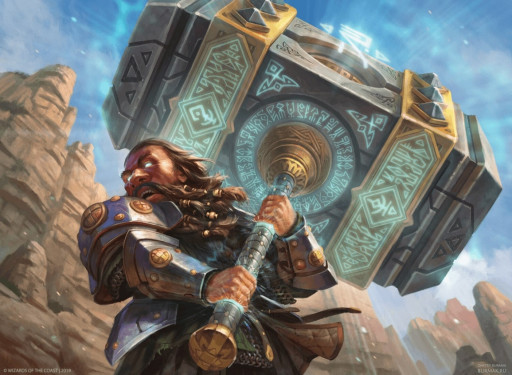
Wizards of the Coast: Colossus Hammer by Dmitry Burmak
It can be intimidating to create an entire world and story from scratch. Are there any good ideas that haven’t been written, that another creator hasn’t already thought of? One of the most important DM and writing tips I ever learned was that everyone builds off of each other. You don’t need to come up with something completely original–just make your story one that you enjoy.
Good creators draw inspiration from each other. You may have loved the character development in the book you just read, saw a dynamic set piece in the latest blockbuster movie, or played an epic boss battle in a video game. Each piece of media you interact with, whether it is good or bad, gives you more tools to write your own stories.
There are plenty of works for you to draw inspiration from! Maybe you want to look at the pantheons and worldbuilding from your favorite stories. You can build off of the official D&D material or homebrew universes, or tweak them to create your own! Who knows, maybe your story will be the one that others draw inspiration from for their stories.
Writing may seem to be a solo endeavor, but it is truly a collaborative project! You have the repertoire of all the great writers who came before you. The best works are mashups of other authors, so have fun and get creative!
1. Listen to Your Players
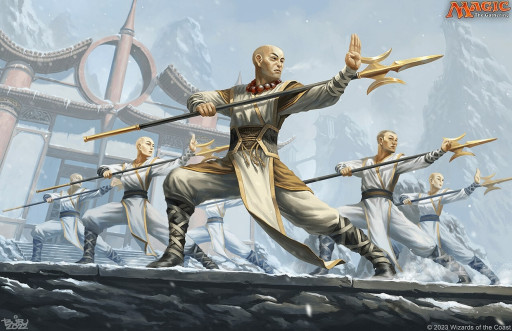
Wizards of the Coast: Monastery Mentor by Brian Valeza
D&D is a game you play with friends, both new and old alike. Even if you are playing a solo game, you still want to listen to the narrative set before you or forge your own path for others. Listening to your players will help you to build the best game and story possible.
Each player comes to the table with their own ideas and perspectives. These differences can enhance your story, transforming it into something that is brand new and unique. While you have the final say on how your campaign is played, listening to your players will help everyone to have fun.
To make the game fun for everyone involved, you’ll want to be respectful of what others bring to the table. Some players are more comfortable with improv and roleplaying, while others prefer heavy combat and rolling the dice. Check in with your players about the main themes of your story and potentially uncomfortable topics. And when a player comes to you with a new idea, let them know you value their input and see if it would be a good fit for your story.
Everyone wants to be heard. When you listen to your players and meet them where they are at, you give them a chance to express themselves, to learn and grow. You also give yourself the chance to learn and grow, to become a better DM and build the best story for your party. Enjoy the time you have together and have fun!

